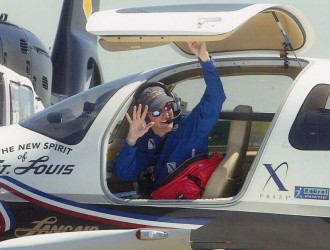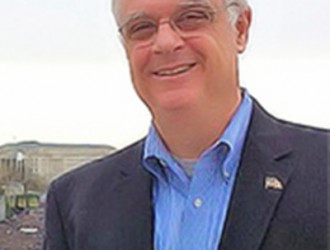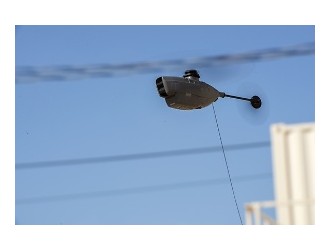HARTFORD — The sun is barely above the dike that hides the Connecticut River when the first airplane takes off from Hartford-Brainard Airport, launching another day at the historic airfield.
Lindsey Rutka, head of the partnership that runs Brainard's main operations, arrives and opens the gate along Lindbergh Drive for a business owner who parks his Corvette just a few feet from his twin-engine Cessna Conquest.

It's a scene that has unfolded since 1921, when Brainard Field, named for a former mayor, became the first municipal airport in New England. These days, Rutka is fighting to rebuild Brainard as an economic hub — announcing a new charter service Tuesday with a newly acquired, 7-seat jet and other aircraft.
But at the same time, the airport is threatened by redevelopment in a revival of a long-shelved plan, championed by the latest Hartford mayor, Luke Bronin, and by state Sen. John Fonfara, D-Hartford.
On Wednesday, a committee of the General Assembly will receive and consider a report with staff recommendations on how best to use Brainard's 200 acres. There's no specific plan on the table but a July updat from the committee included a 2006 proposal calling for nearly 7 million square feet of commercial and manufacturing space, stores, apartments, a marina, a rebuilt trash-to-energy plant and a river park.
The reason for the latest push: Hartford, which is insolvent with no clear path to stability, badly needs new property tax revenues. Brainard kicks in barely more than $400,000 to city coffers, not enough to make a dent in an annual shortfall of about $50 million.
Why so small a figure? Aircraft owners don't pay local property taxes under state law. And the airport is owned by the non-taxable Connecticut Aviation Authority, which also owns Bradley International Airport and strongly opposes redevelopment at Brainard.
Bronin, Fonfara and other elected officials say the airport represents a rare chance to change the city's dismal financial picture.
"Long-term, it's about our ability to grow our way out of this," said Fonfara, co-chairman of the committee studying the issue.
Rutka's local partnership, Hartford Jet Center, landed as the "fixed-base operator" — the master lease-holder for most airport activity — after a less ambitious, national company let the action fade over 15 years.
Supporters say the 95-year-old facility brings more to the region's economy than can be measured in tax payments to the city. Rutka makes the argument that many airplane owners control companies that bring business to the city and the state.
"We can make a renaissance of Hartford and revive it like it was in the 1920s," he said. "We can be the hub, we can bring the business into Hartford."
Back then, Charles Lindbergh launched his nationwide hero's tour here, and Eastern Airlines took passengers on their first flights. The first nylon parachutes were tested here in World War II.
Brainard is moving in the right direction, with a renovated terminal building and more than 360 people working at the various airport-related businesses and government agencies, a figure Rutka and his partners say could double in short order.
The airport has come in and out of the crosshairs for decades, starting in the 1950s, when a large runway was taken for the development that became the South Meadows commercial and industrial district off Brainard Road.
The 2006 plan was spearheaded by the Metropolitan District Commission under William DiBella, chairman of the regional sewer and water agency and a former senate majority leader. It covered not just the airport but also the adjacent, 95-acre trash-to-energy plant and regional recycling center.
"Between those two facilities," Bronin said, "there are hundreds of acres at the intersection of two major highways on the riverfront and they both represent significant development possibilities for the city and the region."
South Meadows Dilemma
Many people in the aviation industry oppose redevelopment, saying Brainard is part of the infrastructure of the state's dominant manufacturing industry. For example, the Connecticut Aero Tech School, located at the airport, trains technicians and mechanics for local companies including Pratt & Whitney, which must hire thousands of workers in the coming years.
Bronin told the legislature's program review and investigations committee that it's "plain and inescapable" — the airport is not the best use of that land for the city, the region or the state.
And so we're at a dilemma, as Hartford looks for ways to turn itself around and the airport looks to show it can attract more corporate aircraft and more aviation-related businesses, building more hangars.
A new restaurant is under construction with plans for an outdoor viewing deck. The new charter company, Pegasus Air Charter, hopes to start scheduled passenger service next year, carrying up to 1,000 people a week to vacation spots such as Block Island, Martha's Vineyard and the Hamptons.
Rutka, 52, a Glastonbury resident, started his first business in the Hartford area at age 19, managing and later owning apartment buildings. He has been in the trash-hauling business (developing a site near the airport), clothing retail and commercial construction.
His partners are Bob Morande, a fellow aircraft owner and pilot who previously owned auto dealerships; and Arian Prevalla, owner of the Connecticut Flight Academy, who was injured in an October crash that killed a student who might have intentionally grounded a plane in East Hartford.
Rutka and Morande also run operations at Windham Airport.
Rutka parades visitors around Brainard and its dozen or so on-site companies such as VIP Avionics Inc. and the Premier Flight Center with the enthusiasm of a kid. If Bronin and Fonfara were to stop by, he would tell them why the airport is an economic engine.
Brainard has long been designated as a "reliever" airport for Bradley International Airport, with 50,000 or more corporate, training and recreational takeoffs and landings per year that would clog Bradley and cost the flyers much more. Those flights include helicopters, sometimes multiple times a day, ferrying executives to and from the giant companies that Hartford desperately needs to keep.
It's the headquarters for the state police aviation unit, the Connecticut Wing of the Civil Air Patrol. It not only has the Connecticut Aero Tech School, which the state built in 2009 at a cost of $10 million, but also two pilot schools, and it has a Federal Aviation Administration control tower.
None of that solves the city's crisis.
Low Demand
A $1 billion development could bring more value to the city if it could happen. Bronin wants to plan for it now.
That would require the state to give up an airport that's working well, in favor of a real estate venture that might or might not work, and certainly not soon.
There are other places the city could develop before it takes Brainard. The troubled Downtown North project around the new baseball stadium comes to mind, along with some parcels in the North Meadows and in the heart of downtown.
None has the scale of the South Meadows, but as we've seen across the state, demand for large-scale, privately financed development in this economy is thin at best.
When the MDC created the plan ten years ago, before the recession, the agency helped run the regional recycling program and hoped to build a trash-to-energy generator next to its wastewater treatment plant. Now DiBella said the agency's direct involvement is over, though he still supports the redevelopment.
The right answer might be to start with a non-residential redevelopment at the current energy plant, operated by the Materials Innovation and Recycling Authority. That site connects directly to Charter Oak Landing and the new Coltsville National Historical Park.
If at some distant time the city still needs land to develop, perhaps in an age when small airplanes have given way to personal jetcraft that land in driveways, it will be time to revisit the taking of Hartford Brainard Airport.





